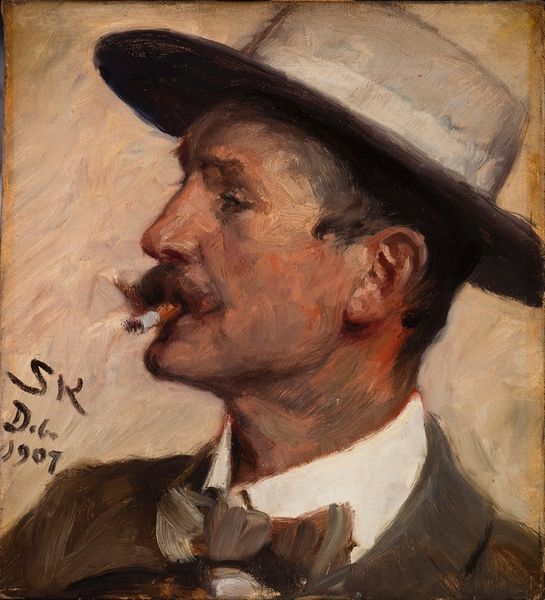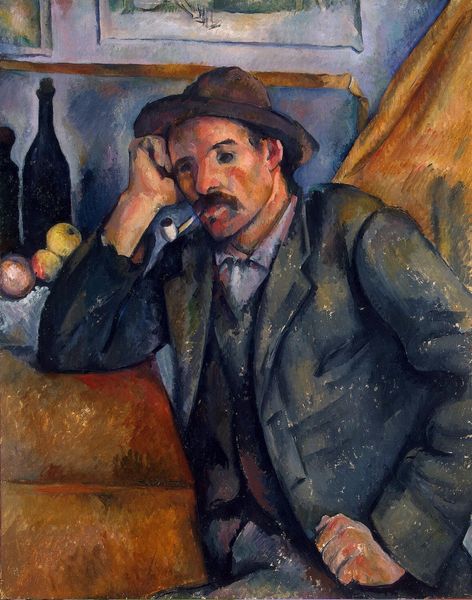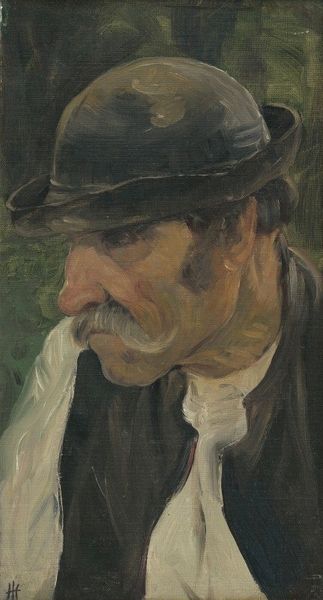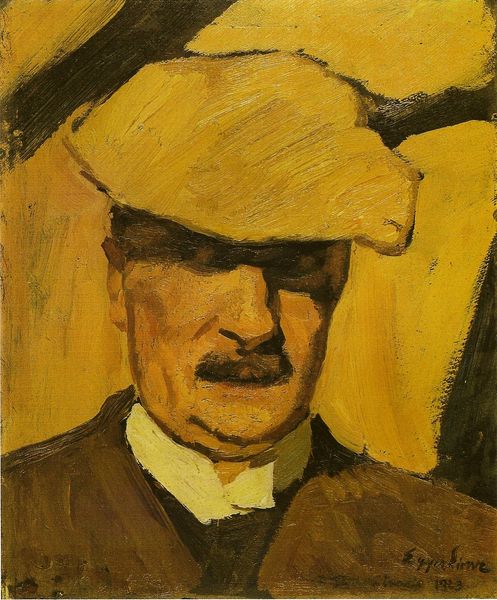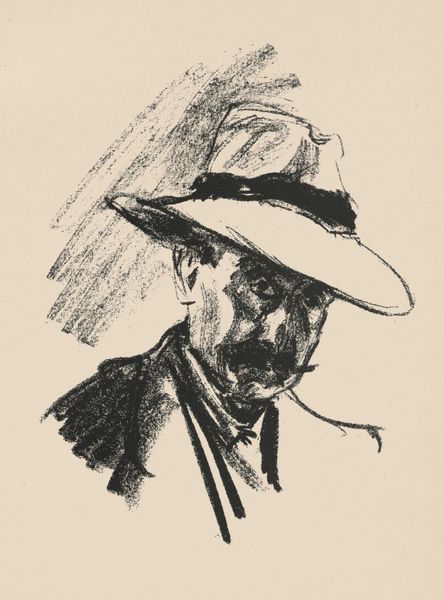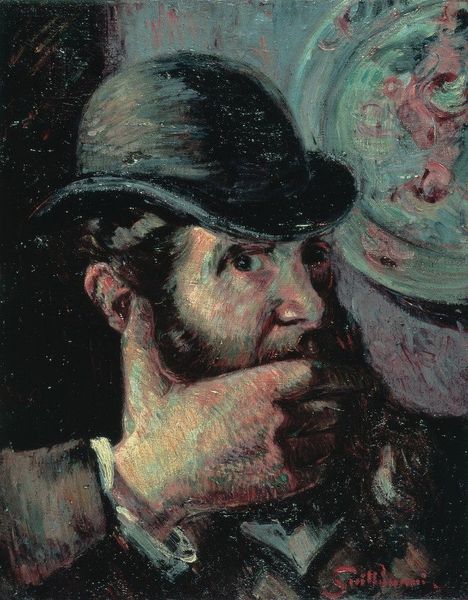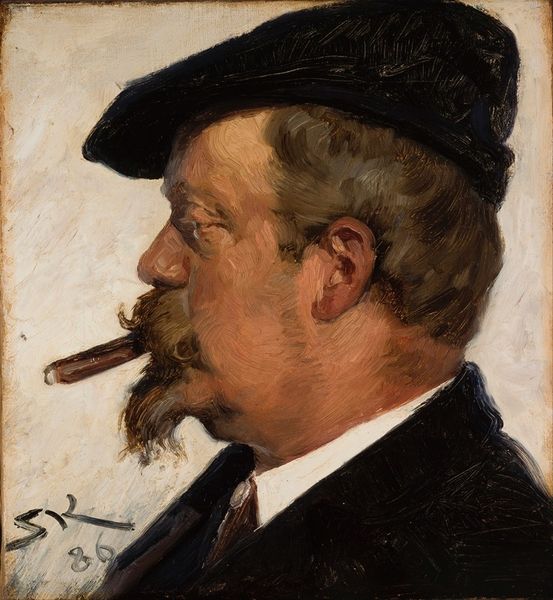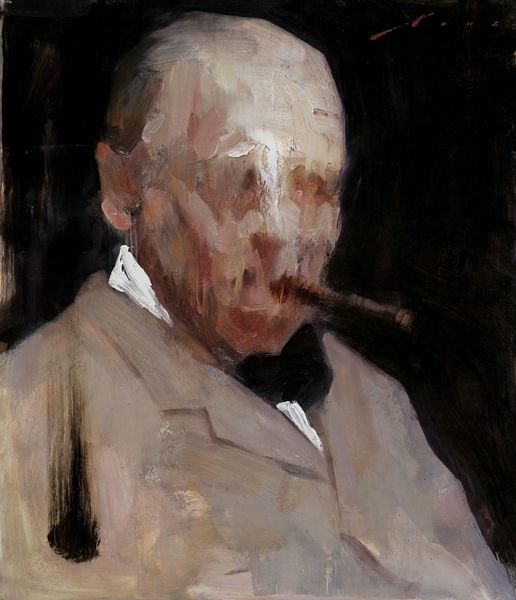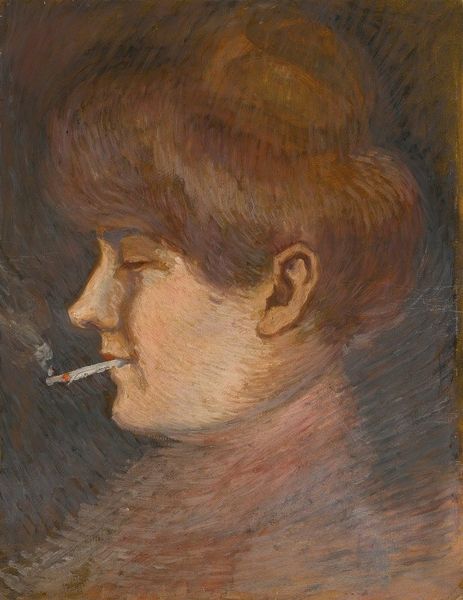
painting, oil-paint, impasto
#
portrait
#
figurative
#
painting
#
oil-paint
#
oil painting
#
impasto
#
portrait reference
#
post-impressionism
Copyright: Public Domain: Artvee
Curator: Well, if it isn't Cezanne's "Man with a Pipe", painted somewhere between 1892 and 1896. Something about the materiality, the thickness of that oil paint, gets me every time. Editor: Immediately I'm struck by this man's stoicism, or is it fatigue? The way the browns and dark hues swallow him up feels incredibly poignant. Curator: There’s a quiet dignity there, isn’t there? Cezanne loved portraying ordinary folks, finding the sublime in the everyday. He captures this man in a moment of pensive reflection, maybe after a long day's work. Look at that pipe—almost a symbol of leisure, or perhaps a necessary crutch. Editor: Exactly! We have to consider the social implications. Tobacco use during this period, particularly among working-class men, was heavily tied to notions of masculinity, camaraderie, and even resistance against capitalist structures, since tobacco often afforded men a much needed rest period within labor schedules. Cezanne immortalizes a class of worker and that dynamic within this artwork. Curator: The way Cezanne constructs the figure, those planes of color, is just revolutionary. It's almost like he’s building the man, brick by brushstroke, solidifying him on the canvas for eternity. What a thought: he turned his sitter to a statue. And yet, so human! I love the slight asymmetry – nothing's perfect, real life seldom is. Editor: I find it intriguing how Cezanne divorces his subject from a clear spatial context. He floats against ambiguous shading—neither here nor there. The subject lacks context beyond the hat and the pipe, but that perhaps reflects a sense of class struggle through the faceless masses and laborers. Where and how would the sitter fit within this landscape, one might ask. Curator: See, to me it lends a timeless quality. The lack of context means we're not locked into one specific time or place, although it's impossible to unsee history. It pushes him beyond that to become an everyman, I suppose. I wonder what his name was. We should give it some thought. Editor: Right. These portraits force us to consider the dignity and humanity often erased or overlooked when thinking about history and class structures. It pushes us to consider: Who holds power and whose narratives are prioritized and by whom? Curator: Ah, now that's food for thought! Makes me see the pipe as more than just a pipe. I wonder, if we gave him a name and listened closely, what stories he might share from that canvas. Editor: Precisely. Let’s carry that challenge with us today: who have we yet to imagine? Whose struggles have we to face?
Comments
No comments
Be the first to comment and join the conversation on the ultimate creative platform.


